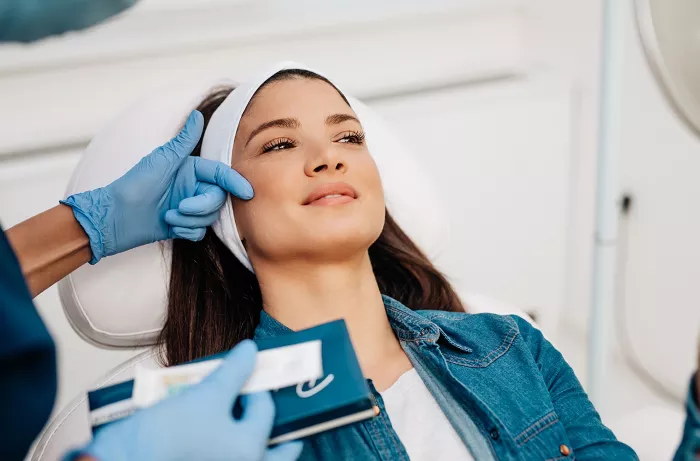Facial fillers are a popular cosmetic treatment that can restore volume, smooth wrinkles, and enhance facial contours. However, proper preparation is key to minimizing risks like bruising, swelling, or uneven results. Knowing what to avoid before your appointment ensures a smoother procedure and better outcomes.
1. Medications and Supplements to Avoid
Blood Thinners Increase Bruising
Certain medications and supplements can thin your blood, leading to more bruising and swelling. Avoid these for at least 3-7 days before treatment:
- Aspirin
- Ibuprofen (Advil, Motrin)
- Naproxen (Aleve)
- Vitamin E
- Fish oil
- Ginkgo biloba
- Garlic supplements
Note: If you’re on prescription blood thinners (like warfarin), consult your doctor before stopping them.
Avoid NSAIDs for Pain Relief
While you might want to take pain relievers beforehand, NSAIDs (like ibuprofen) can increase bleeding. Ask your provider if acetaminophen (Tylenol) is a safer option.
2. Alcohol and Caffeine Before Fillers
Skip Alcohol for 48 Hours
Alcohol dilates blood vessels, increasing bruising and swelling. Avoid drinking for at least 2 days before your appointment.
Limit Caffeine on Treatment Day
Caffeine can make you jittery and heighten sensitivity. Avoid coffee, energy drinks, or soda on the day of your procedure.
3. Skincare Products to Pause
Stop Retinoids and Strong Exfoliants
Retinol, tretinoin, and harsh acids (like glycolic or salicylic acid) can irritate the skin. Discontinue use 2-3 days before fillers.
Avoid Waxing or Hair Removal Near Treatment Area
If you’re getting lip or chin fillers, skip waxing, tweezing, or shaving for 24 hours to prevent skin irritation.
4. Exercise and Physical Activity
No Strenuous Workouts Before Fillers
Heavy exercise increases blood flow, raising the risk of bruising. Avoid intense workouts for 24 hours before your session.
Skip Saunas and Hot Baths
Heat can cause swelling. Avoid hot showers, steam rooms, or saunas the day before your treatment.
5. Diet and Hydration Tips
Reduce Salty Foods
High-sodium meals cause water retention, worsening swelling. Eat light, hydrating foods before your appointment.
Stay Hydrated (But Don’t Overdo It)
Drink plenty of water in the days leading up to treatment, but avoid excessive water right before to prevent discomfort.
6. Other Cosmetic Treatments & Procedures
Avoid Dental Work Near Filler Appointment
Dental cleanings or extractions can introduce bacteria. Schedule them at least 2 weeks apart from fillers.
Skip Facials, Lasers, or Microneedling
Avoid skin treatments (like chemical peels or lasers) 1 week before fillers to prevent irritation.
7. Lifestyle and Habits to Adjust
Quit Smoking Before and After
Smoking slows healing and increases complications. Avoid it for at least 24-48 hours before and after treatment.
Don’t Get Fillers If You’re Sick
Cold, flu, or active infections (like cold sores) weaken your immune system. Reschedule if you’re unwell.
Minimize Stress
Anxiety can make injections more uncomfortable. Practice deep breathing or meditation to stay relaxed.
8. Timing Your Filler Appointment
Avoid Fillers Right Before Big Events
Swelling and bruising are common. Schedule your treatment 1-2 weeks before important occasions.
Don’t Get Fillers During Your Period
Hormonal changes increase bruising risk. Plan your appointment for another time in your cycle.
9. Pre-Treatment Skin Care
Arrive with a Clean, Makeup-Free Face
This reduces infection risk. Your provider will cleanse the area, but starting fresh is best.
Avoid Sun Exposure and Tanning
Sunburned or tanned skin is more sensitive. Wear SPF 30+ and avoid tanning beds 1 week before treatment.
10. Choosing the Right Provider
Don’t Go to an Unqualified Injector
Only trust board-certified dermatologists or plastic surgeons with experience in fillers. Cheap or unverified providers increase risks.
Never Skip the Consultation
A thorough consultation ensures you’re a good candidate and helps set realistic expectations.
Be Honest About Your Medical History
Hiding health conditions (like allergies or autoimmune disorders) can lead to serious complications.
Conclusion
By following these guidelines, you’ll reduce risks and enjoy natural-looking, long-lasting results. Always consult with a qualified professional for personalized advice.
Related topics:
How to reduce facial wrinkles at home?


